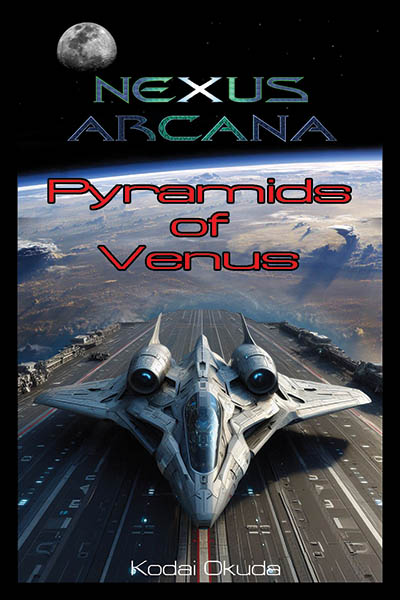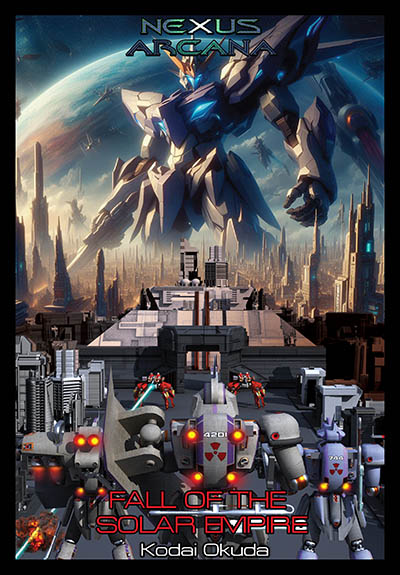Faster Than Light drives of 1st Interplanetary War Era
by , 11-14-2011 at 01:58 AM (166396 Views)
ELECTRO-ELEMENT (DARK ENERGY) BASED DRIVES
Faster-Than-Light travel (or FTL) would have been impossible for mankind had it not been for the discovery of the alien ruins on the various inner planets of Sol and the spacecraft that littered the cluster of Near Earth Objects trailing our planet.
Human science simply did not have the know-how to go beyond simple theories about how a faster than light drive system might work, let alone build one. The discovery of the alien ruins and numerous Prodono wrecks during the 2050s and 2060s changed all that.
THE INTERSECTION DRIVE:
The first approach to faster than light speed travel is the Intersection Drive family of engines designed by UNSC master shipwright Yuri Severnoe. Dr. Severnoe developed the Type-1 using the data he received from chief Solar Empire xenoarchaeologist Dr. Xiang. Xiang's teams had recovered a relatively intact Jhor-Kiel class Prodono planetary assault ship within the NEO's trailing Earth in 2055. The fold system of the vessel was still whole and undamaged. While the fold system was impossible for Dr. Severnoe to back-engineer, he and his team of engineering experts where able to develop their own drive system using what they could scry from the alien vessel as a guide. After ten years of dedicated research and painstaking effort, Doctor Severnoe's team developed the Type-1 Intersection Drive unit.
TYPE-1 INTERSECTION DRIVE:
Doctor Severnoe designed the first Intersection drive and named it the Type-1. It was based on the principle of punching a hole through the space-time continuum into a layer of its "skin"--dubbed "warpspace"--by using the intersection of natural cosmic electro-element lines of force (Dark Energy) near a planetary or stellar body of considerable size. Doctor Severnoe reasoned that since astral bodies were plentiful in space, the need for an internal graviton generation system--to create the necessary Dark Energy vortex--was not required. He postulated that there are enough stellar objects that exert at least 1G of gravity for the drive to work in any solar system. All a craft had to do to use this drive was follow the direction of rotation of the target planet or star within its gravity well while accelerating around the stellar body in order for the drive to create the Dark Energy vortex and "jump" through warpspace. One of the biggest problems with the Type-1 Intersection drive is due to an inherent instability of natural Dark Energy vortices that cause a dangerous subatomic particle-oscillation that prohibits the use of more than one Type-1 engine on a spacecraft. Dr. Severnoe also discovered that the time dilation of the Type-1 intersection drive is roughly one Earth week per 10 light years traveled or .06 light years per hour. As FTL drives go, this is the slowest and the most dangerous of the "warp-drive" engine types.
TYPE-2 INTERSECTION DRIVE:
The second type of intersection drive, the Type-2 engine, was developed by Dr. Pyotr Zdhanov of the UN Solar Empire R&D advanced propulsion laboratory on the planetoid Pallas. This drive is able to generate its own gravity well by using the antigravity system of the vessel it is installed on as a graviton projector. Thus spacecraft must have an antigravity unit installed for this drive to work. The Type-2 intersection drive creates a warp bubble around the spacecraft that pulls and pushes the ship along the cosmic electro-element lines of force (Dark Energy) at FTL velocity. Configurations of up to three Type-2 intersection drives can be mounted on a spacecraft. However, each drive requires its own antigravity unit, so a craft with two or three Type-2 drives will require either two or three antigravity units respectively. The power requirements of more than one antigravity unit make mounted dual or triple drive configurations impractical on most vessels. In addition, multiple drive engines must be used conjointly with each other in order to generate a stable warp-bubble. Anything other than a infinitesimal deviation between the drives can be catastrophic for the spacecraft. The time dilation of a Type-2 engine is equal to 20.16 light years per Earth week or .12 light years per hour for a single drive unit. The time dilation can be reduced by adding up to three additional drive units, which will triple the "speed" the spacecraft travels through warpspace and thus increase the distance traveled while reducing the time elapsed in "real-space".
STELLAR WARP DRIVE:
The development of the Stellar Warp Drive (SWD) system was taken directly from data acquired at the alien battlefactory in orbit around Alpha Centauri 3. The Prodono dropship, known as the K'hor Kai, was a refit of an ancient space exploration cruiser used by the Prodono some time around 323,050 BC. Originally the K’hor Kai was fitted with either a dual nacelle, or a quad nacelle configuration of externally mounted stellar warp drive engines as its main propulsion system for FTL travel. It was Doctor Xiang who deciphered detailed information on the internal schemata of these engines and how to remove them (because they were obsolete by 200,000 BC) in order to remodel the K'hor Kai for use as a dropship.
It was Dr. Pyotr Zdhanov who used the information Xiang provided to develop a UNSC version of the SWD system. Dr. Zdhanov based his version of the stellar warp drive on the Type-2 Intersection drive system he had developed for the Conqueror Class Destroyer. However, instead of the ship’s antigravity unit being used to generate a warp-bubble, this drive system uses a positive and negative graviton field generator, within an engine nacelle, that warps space-time around the ship in a bubble while simultaneously attaching itself to a cosmic electro-element line of force (Dark Energy). The stellar warp drive allows the craft to travel along the cosmic electro-element lines at faster than light speeds like a cosmic-cablecar. Dr. Zdhanov was able to create stable warp-field models to support single, dual, triple, and quad Stellar Warp Drive engine nacelles mounted on a ship externally. Internally, he was only able to create a configuration using single or dual nacelles.
The time dilation of the warp nacelles, in light years per hour, is roughly equal to .038 light years per hour per engine. "Faster" speeds were generated in improved SWD engine nacelle designs and warp-field configurations.
* * *
SUPER-DIMENSIONAL ENERGY PHYSICS (HYPERDIMENSIONAL/HYPERSPACIAL ENERGY) BASED DRIVES
HYPERSPACE FOLD FLIGHT SYSTEM (HFFS)
The Microspace Engine (the first Prodono fold drive)
The hyperspace fold flight system, or HFFS, drive engine was a type of interstellar propulsion system directly developed from an earlier Prodono design Dr. Xiang dubbed the "Microspace Drive engine." What the Microspace Drive engine physics are remains a complete mystery as of 2080. However, Xiang's notes indicate that translations of the Prodono archives say that the Microspace Drive uses "Super Dimensional Energy Physics" to generate a graviton Fold-Bubble. This "Fold-Bubble" can “punch” open a hole in the space-time continuim into hyperspace that allows for considerable time-dilation reduction when traveling vast distances.
The HFFS
The HFFS was the primary drive system found on all of the alien derlicts within our solar system and those found in the Alpha Centauri star system. While the basic operation of the drives are somewhat complicated, the use of the device was not impossible to figure out. Nevertheless, even after over twenty years of intense research and study into the science of the HFFS drive unit, the means to develop and manufacture a working hyperspace fold flight system have proven to be something of an enigma to Earth's brightest minds. Capable of time-dilations of 5 to 10 light years per hour, this drive system was considered by Dr. Xiang to be an early version of an even more advanced form of hyperspace fold system used by the Prodono sometime later in their Republic as records extracted from the computer data banks of the Prodono battlestation indicated refit procedures for the ships in mothball at the facility.
* * *
RESEARCH SOURCES FOR DRIVES
The Nexus Arcana Electro-Element Faster Than Light drives (Dark Energy) are based on the scientific theories of Baylor University Physicists Gerald Cleaver, and Richard Obousy (coauthor)papers on FTL drives.
The warp engine they postulated is based on a design first proposed in 1994 by Michael Alcubierre.
Related Articles Here:
http://news.discovery.com/space/warp...ip-engine.html
http://www.cosmosmagazine.com/news/2...y-faster-light
http://news.discovery.com/space/inte...rd-obousy.html
http://www.msnbc.msn.com/id/26179686...ed-make-it-so/
The Superdimensional Drives are loosely based on the pseudo-scientific "theories" of hyperdimensional physics found on websites by various speculative scientific researchers, UFOogists, and metaphysicists.
Twenty-six dimensional polytope and high energy spacetime physics
(Warning PDF file)
http://www.west.net/~simon/index.html
http://quantumd.wordpress.com/tag/hyper-dimensional/
http://www.halexandria.org/dward118.htm
http://www.vgaplanets.com/v4doc/hdstress.htm







 Email Blog Entry
Email Blog Entry

